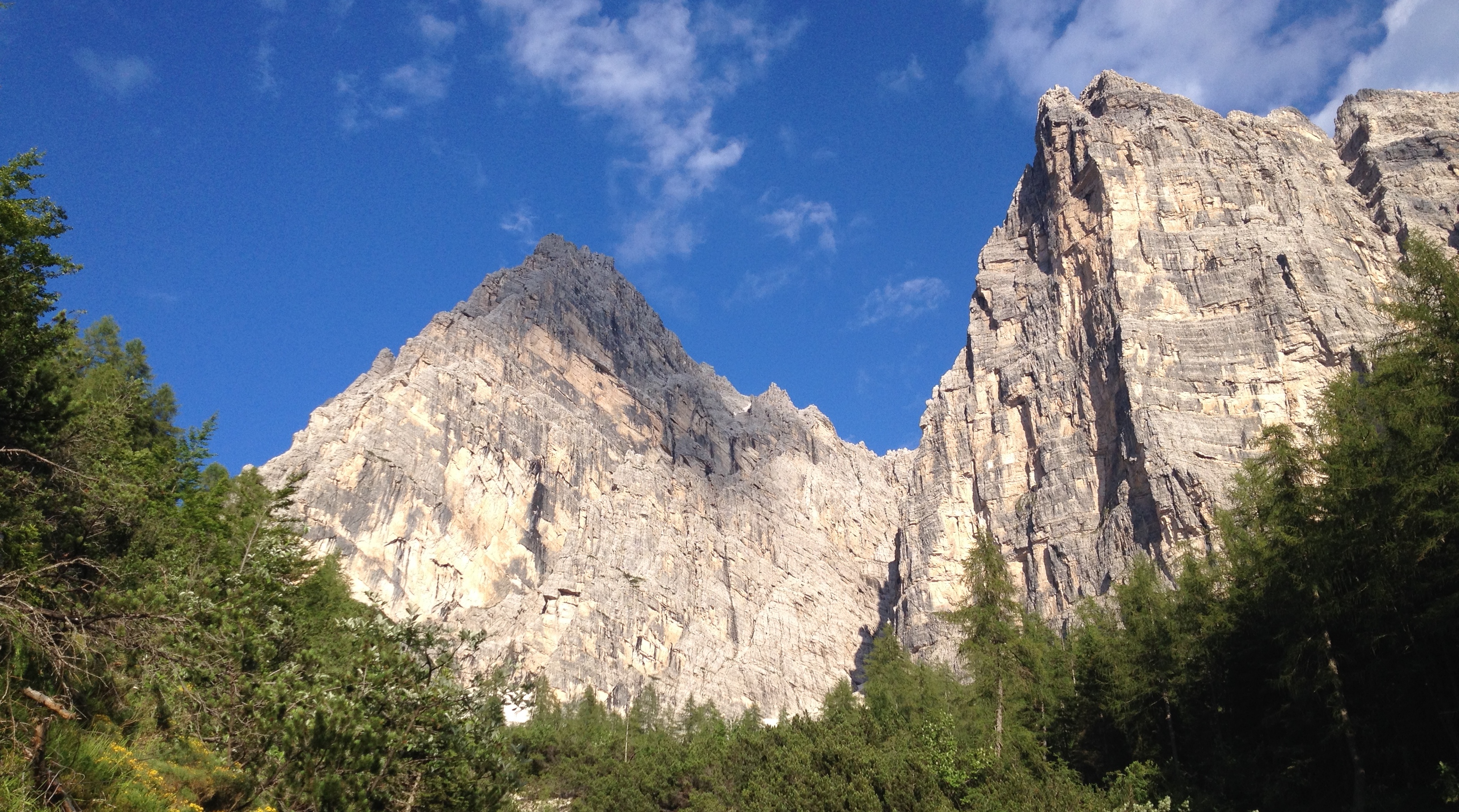The Dolomites: World Heritage Site

The Dolomities are mountains unlike any other.
Peaks, pinnacles, vertical walls, green fields. This is what is on offer in the Dolomites, whether you approach it on foot, by bicycle or car. The experience makes you feel like you are leafing through a wonderful geology book, making it a unique opportunity worldwide to learn about the natural history of an area so exceptional as to be recognised as a World Heritage Site (UNESCO 2009)

Monte Pelmo 3168m s.l.m.
The first to discover the narrow and vertiginous ledges that allow one to reach the peak of Mount Pelmo were the local hunters. More than any other mountain, it offers routes full of exciting and exposed ledges and "viaz", aside from numerous alpines tracks. Mount Pelmo is also known as "God's throne", due to its unusual outline, created by a vast pile of limestone and dolomitic stone.

Civetta 3267 m s.l.m.
The Civetta mountain was first climbed by a local from the valley, in the middle of the 19th century, a time when climbing was only done for hunting purposes. The peak was first reached in 1867. Since then, infinite routes taking you to the top have been established, these setting off both from the Valley of Zoldo and of Agordo. The first level of the VI degree offers numerous walking itineraries, from easy ones to more complicated ones, allowing one to live fully the charm of the Dolomites.

MOUNT SPIZ DI MEZZODI’ Spiz nord 2305m Spiz di mezzo 2324m Spiz sud 2309m
he Mezzodi is an imaginary castle, made of narrow spires, mighty towers, narrow ledges that act as pathways, and big caves that appear as huge imaginary main doors. It provides a savage world, with few marked paths and many tracks to be discovered, offering the opportunity to put into practice one's orientation. The Sora al Sas hut and the Pramperet are ideal starting or arrival points, also for excursions into the National Park of the Dolomiti of the Belluno area.

BOSCO NERO 2468m
The Bosconero Group is a further collection of mountains, offering diversities of many kinds and, similarly to other groups above-mentioned, not so well known by the mass. It is nevertheless, very much admired and appreciated for its complexities, this right back to its first climbers, British alpinists. The Group has the Sasso of the Bosconero, the Tovanella Mountain and the Rocchetta Alta located centrally. The Sfornoi Group, a dolomitic fan, and the spiked chain, the Cime della Serra, are at its extremities. The Bosconero hut can be a starting point for both walks and alpine paths, and also rock climbs.

MOIAZZA 2878m s.l.m.
Mount Moiazza is a southern offshoot of Mount Civetta. It offers, in addition to classic routes and the famous Costantini Ferrata, some of the most spectacular and complicated tracks amongst all those of the Dolomites. It also appeals to free climbing. The mountain is easily accessible from the Duran Pass and is ideal for both sporting activities and relaxing pic nic experiences, in perfect harmony with the environment.

MOUNT TAMER 2550m MOUNT SAN SEBASTIANO 2488m
The Castle of Moschesin, the Gardesana, the Tamer, and the peaks of San Sebastiano, are a collection of peaks, linked by large or inaccessible forks, nurturing a paradise of alpine flora. It is not surprising that it is one of the most spectacular high altitude routes of the Dolomites. The N.1 High Route crosses this group of peaks between the Duran Pass and the Val Pramper.












